Product Engineering
Company
Innovate Ideas into Exceptional Products with
Upsquare's Product Engineering Expertise.
What is Product Engineering?
Product engineering is the end-to-end process of turning an idea into a fully functional product, covering its design, development, testing, and deployment. It focuses on creating innovative, high-quality, user-friendly solutions while balancing functionality, performance, cost, and manufacturability. Product engineering integrates diverse disciplines and expertise, transforming ideas into commercially viable solutions that meet customer needs, business goals, and manufacturing realities.
Product Engineering Challenges
Businesses and enterprises have definite goals to overcome business challenges. They need to develop, maintain, or modernize their product engineering. This includes custom-built products, mobile adoption, new feature development, and more.
01
Handling Complex Products
Managing complex products requires a clear understanding of the technology and user needs. Staying updated with technological advancements and ensuring the products work smoothly is the key.
02
Faster Time-to-Market
Businesses struggle to balance speed with quality to build products. Effective planning, agile methodologies, implementing automation, and modern development tools can help achieve faster delivery while maintaining high standards.
03
Balancing Cost and Quality
Product managers must balance a product's features and price to make it appealing to customers. Researching customer needs, focusing on key features, considering production costs, and testing different prices can help.
04
Transitioning Legacy Systems
Migrating from legacy systems to modern technologies can be tricky. It involves smoothly transferring data, ensuring compatibility, and maintaining security. Careful planning is the key to migration with minimal disruption to ongoing business operations.
05
Maintaining Quality
Compromising on quality can lead to negative customer experiences, reputational damage, and financial losses. Building high-quality products requires a focus on rigorous testing, defect resolution, and continuous monitoring for high quality.
06
Meeting Regulations
Compliance with data privacy laws (like GDPR), accessibility standards (like WCAG), and industry-specific rules (like HIPAA) is crucial. Non-compliance can lead to legal consequences, lost trust, and financial penalties.
07
Resource Constraits
Dealing with resource constraints means creating quality products while managing limited time, budget, and resources. Product managers must identify bottlenecks, reduce waste, and streamline processes to meet deadlines and stay within budget.
Product Engineering Expertise
Product engineering combines technical proficiency with a deep understanding of customer needs, market trends, and business goals. With the right expertise, product engineering teams can create innovative solutions, streamline development processes, and build products that are reliable, user-friendly, and aligned with customer expectations.
System & Hardware Engineering
Effective product development requires blending design and hardware engineering. By integrating these disciplines, businesses get their products to market faster, reduce costs, and create innovative products that connect with customers.
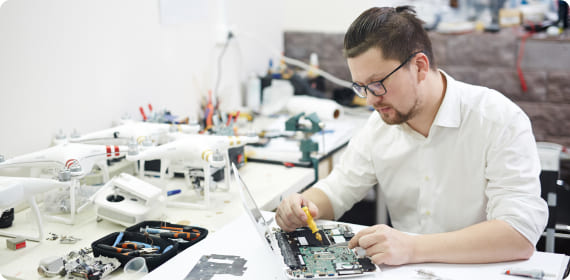
Mechanical Product Engineering
Creating complex mechanical systems requires a clear plan. By following a structured approach, businesses can design, test, and maintain their products more efficiently, resulting in high-quality products that meet customer needs.

Embedded Product Engineering
Embedded systems support new product development and enhance existing systems for better performance. Leveraging expertise in embedded product engineering, businesses can stay competitive and capitalize on new opportunities.
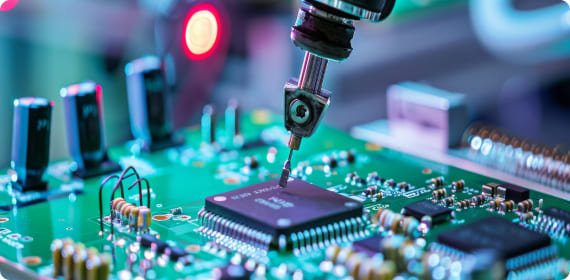
Software Product Engineering
Enterprises need to develop quickly, efficiently, and with high quality. A detailed approach to design, development, and testing enables businesses to deliver innovative products with great user experiences and stay ahead of the competition.

Product Re-engineering Services
With technology evolving rapidly, products can quickly become outdated. Product re-engineering offers a strategic solution, enabling businesses to update their products, improve performance, and extend their lifespan.

Product Engineering Consulting
To stay competitive, businesses must ensure their products continue to meet changing customer needs. Expert consulting provides valuable insights, helping enterprises optimize their products and drive long-term success.

Product Engineering Services & Solutions
Effective product engineering is more than design and development. It's about blending technical expertise, business acumen, and a deep understanding of customer needs to create products that deliver real value.
Product Prototyping
Prototyping enables businesses to test ideas, identify potential flaws, and refine their vision before investing heavily. A well-crafted prototype can save time, reduce revisions, and accelerate the launch process.
Digital Product Development
Successful digital product development requires a combination of technical expertise, design thinking, and user-centric engineering. With this approach, businesses can create high-quality digital products that deliver seamless user experiences across web, mobile, and IoT platforms.
Product Testing Services
Thorough testing is essential to ensure that products meet customer expectations and are market-ready. Rigorous testing protocols help identify and fix functional issues, avoid costly iterations, and provide a flawless user experience.
MVP Development
Developing a Minimum Viable Product (MVP) allows businesses to launch a basic product version of their product quickly, gather user feedback, and iterate rapidly. It minimizes risk and enables companies to refine their products based on real-world insights.
Product Modernization
Legacy and outdated products can leave your business behind. Modernizing existing products by adopting new technologies, migrating to cloud platforms, and integrating innovative features can help companies stay ahead of the curve.
Product Maintenance & Support
Post-launch support is critical to ensure products continue to deliver value to users. Ongoing maintenance, updates, bug fixes, and security patches help businesses keep their products running smoothly, securely, and efficiently.
Ideate. Innovate. Engineer
Turn your product visions into futuristic products with product engineering experts.
Product Engineering Industry Insights
Dive into strategies, technologies, and best practices to help you build transformative, future-ready products. Stay updated with the latest insights into product engineering.
Revolutionizing Healthcare: Product Engineering with Wearables and IoT Devices
Discover how product engineering is transforming healthcare by integrating wearables and IoT devices, enabling real-time monitoring, predictive analytics, and enhanced patient outcomes.
What is Software Product Engineering?
Gain a comprehensive understanding of software product engineering, encompassing the end-to-end process of turning ideas into scalable, user-centric software solutions.
AI in Product Engineering: Transforming Industries with Innovation
Explore how artificial intelligence is revolutionizing product engineering by enhancing design processes, automating testing, and enabling smarter, more efficient product development.
Understanding the Role of Product Engineering in Business Transformation
Learn how product engineering drives business transformation by reducing costs, improving collaboration, and aligning products with evolving market needs.
Building the Perfect Product Engineering Strategy: A Step-by-Step Guide
Follow a step-by-step guide to developing an effective product engineering strategy that aligns with your business goals, target audience, and budget considerations.
Product Engineering Benefits
ZEfficient product engineering enables companies to enhance customer satisfaction, reduce costs, and design products that deliver lasting value.
Enhanced Product Quality
Integrating advanced technologies and solid engineering principles is key to developing high-quality products that perform optimally. This, in turn, fosters higher customer satisfaction, brand loyalty, and business success.
Competitive Advantage
Innovative products incorporate unique features and improved functionality that help businesses stand out. By prioritizing user-centric design, companies can expand their reach and establish a competitive edge.
Customer Satisfaction
Product engineering helps businesses understand customer needs and expectations. Companies can create products that deliver better user experiences and higher customer satisfaction.
Cost Efficiency
Effective product engineering helps reduce costs by optimizing design, using affordable resources, and streamlining manufacturing. This saves money and increases revenue without sacrificing quality.
Faster Time-to-Market
A streamlined development process helps companies bring products to market faster. Rapid prototyping, efficient project management, and methodologies like Lean and Agile help achieve this.
Scalability and Adaptability
Designing products and software to adapt to changing market needs helps businesses stay ahead. This forward-thinking approach makes it easy to add new features and upgrades, ensuring long-term success.
Reduced Risks
Product engineering methodologies help businesses identify and address potential risks early in the development process, reducing the chances of issues later on.
Brand Reputation and Longevity
Creating high-quality, customer-focused products is key to building a strong brand reputation. These products lead to positive word-of-mouth, repeat purchases, and long-term business growth.
Product Engineering Process
By combining advanced technology with extensive domain knowledge and the proven development process, we deliver future-proof solutions that ensure long-term success for your business.
Discovery & Planning
Analyze business needs, define product requirements, and design a clear project scope, timeline, and budget.
Design & Prototype
Create user personas, develop wireframes, & high-fidelity designs. Conduct usability testing and refine the design.
Engineer & Develop
Create the technical architecture, select the tech stack, implement features, and conduct testing.
Deployment & Support
Deploy the product and conduct post-launch review. Refine & optimize the product based on feedback.
Product Engineering Tech Capabilities
Advanced technologies play a key role in building future-ready products. We focus on creating solutions that are secure, efficient, and adaptable to change.
PCB Design and Fabrication
Designing high-performance printed circuit boards (PCBs) involves careful planning and detailed fabrication. It ensures reliable and durable designs that meet product requirements.
Sensor and IoT Device Integration
Integrating sensors and IoT devices allows systems to collect and share data in real time. The goal is to ensure seamless connectivity and functionality.
Rapid Hardware Prototyping
Technologies like 3D printing and CNC machining help speed up hardware prototyping. Quick testing and validation of designs ensure reduced development time and costs.
Hardware-in-the-Loop (HIL) Testing
HIL testing creates controlled environments to simulate real-world conditions. Thus, it helps verify that embedded systems and hardware perform as expected in various situations.
Cloud-based IoT Platform Development
Cloud-based IoT platforms collect and manage data in real time. Users can control these systems remotely through mobile apps. These platforms improve convenience and security.
Machine Learning and AI Integration
Adding machine learning and AI improves data analysis, automation, and decision-making. AI and ML technologies help optimize products for higher efficiency and changing market needs.
FAQs
How do we guarantee product quality?
Is product engineering beneficial for startups and SMBs?
Can you help us with market research and sizing?
What are the key factors to consider when designing a product?
When designing a product, it’s essential to consider user experience, functionality, scalability, and manufacturability to ensure the product meets its intended purpose.
How do we ensure product reliability and durability?
Product reliability and durability can be ensured by following rigorous testing and validation, selecting high-quality materials and components, and designing the product with maintainability and repairability in mind.
What role does user experience play in product development?
User experience is critical in product development, impacting user satisfaction, adoption, and loyalty. A well-designed user experience can also drive business success.
What is the approach to ensuring faster time-to-market?
Agile methodologies and rapid prototyping streamline the product development lifecycle. It allows businesses to launch their products quickly without compromising on quality.
Can product engineering help reduce development costs?
Yes, by leveraging optimized designs, cost-effective materials, and efficient processes, product engineering can significantly reduce development and manufacturing costs while maintaining quality.
How do we measure the success of a product development project?
The success of a product development project can be measured through various metrics, including product performance, user adoption, customer satisfaction, and return on investment (ROI). Regular monitoring and evaluation ensure the project meets its intended objectives.
How do we ensure the quality of the product during development?
Quality is maintained through thorough planning, regular testing, and feedback loops throughout the development cycle. Our team follows best practices such as code reviews, automated testing, and continuous integration to ensure the product meets the highest standards.
Blogs
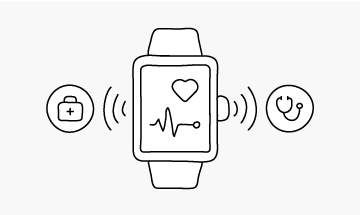
The healthcare business is undergoing a seismic transition, fueled by
- Utpal Vaishnav

We all know that overconsumption is harming our planet. That’s
- Utpal Vaishnav
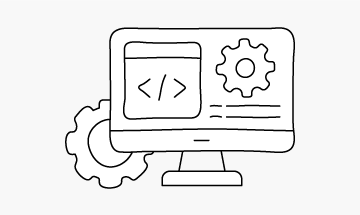
The tech world is changing quickly, and the competition to
- Utpal Vaishnav

The healthcare business is undergoing a seismic transition, fueled by
- Utpal Vaishnav

We all know that overconsumption is harming our planet. That’s
- Utpal Vaishnav

The tech world is changing quickly, and the competition to
- Utpal Vaishnav
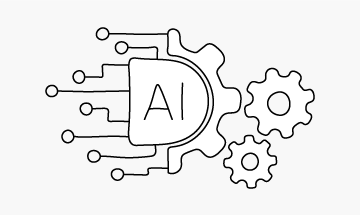
Product engineering is how we turn ideas into products that
- Utpal Vaishnav
Contact Us
India Office
3rd Floor, D Block, Satyam Corporate Square, SBR, Bodakdev, Ahmedabad, Gujarat 380054
Europe Office
Herengracht 449 A, 1017BR Amsterdam
Singapore Office
160 Robinson Road, #14-04 Singapore Business Federation Centre, Singapore 068914